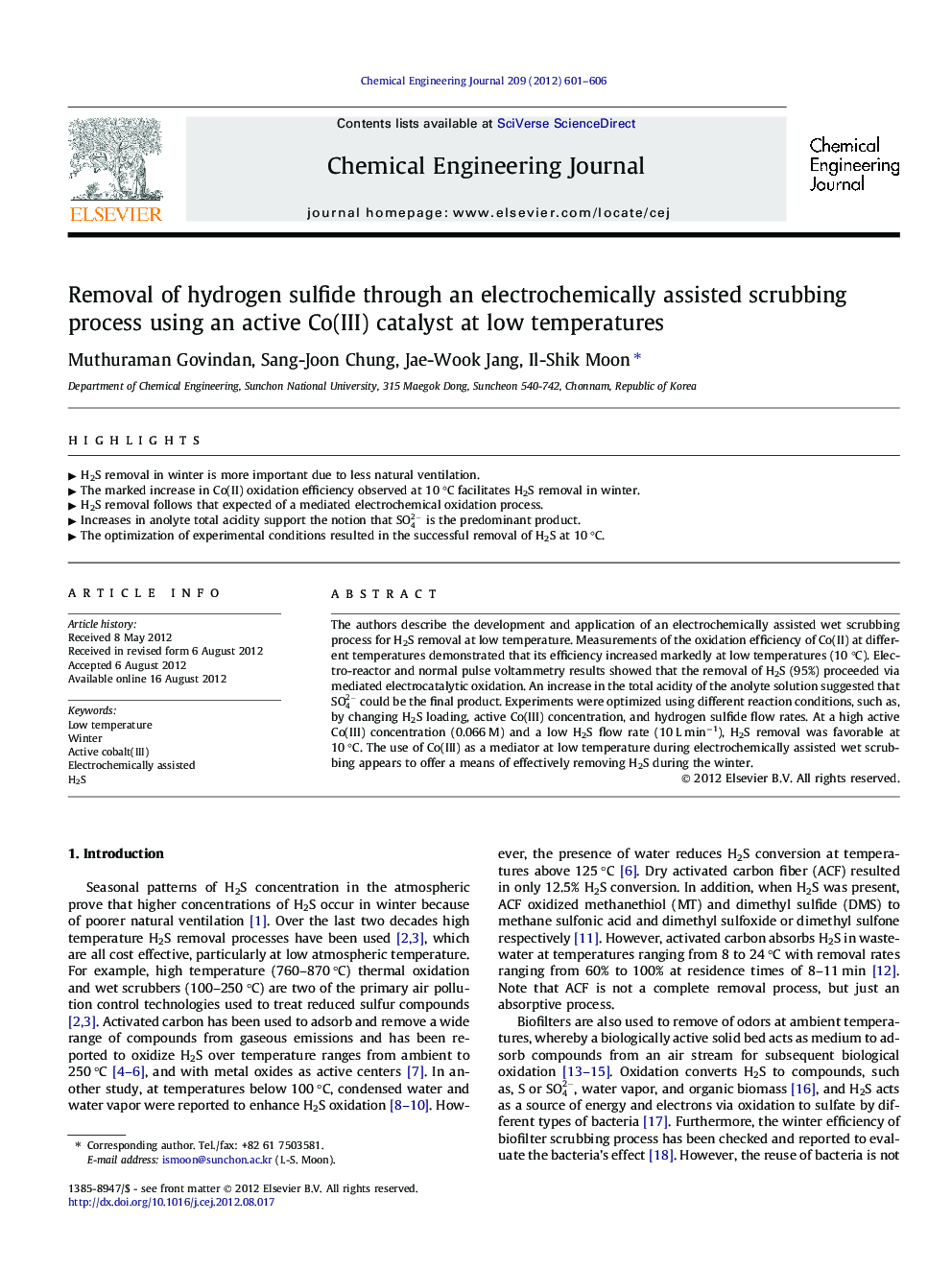| Article ID | Journal | Published Year | Pages | File Type |
|---|---|---|---|---|
| 149231 | Chemical Engineering Journal | 2012 | 6 Pages |
The authors describe the development and application of an electrochemically assisted wet scrubbing process for H2S removal at low temperature. Measurements of the oxidation efficiency of Co(II) at different temperatures demonstrated that its efficiency increased markedly at low temperatures (10 °C). Electro-reactor and normal pulse voltammetry results showed that the removal of H2S (95%) proceeded via mediated electrocatalytic oxidation. An increase in the total acidity of the anolyte solution suggested that SO42- could be the final product. Experiments were optimized using different reaction conditions, such as, by changing H2S loading, active Co(III) concentration, and hydrogen sulfide flow rates. At a high active Co(III) concentration (0.066 M) and a low H2S flow rate (10 L min−1), H2S removal was favorable at 10 °C. The use of Co(III) as a mediator at low temperature during electrochemically assisted wet scrubbing appears to offer a means of effectively removing H2S during the winter.
► H2S removal in winter is more important due to less natural ventilation. ► The marked increase in Co(II) oxidation efficiency observed at 10 °C facilitates H2S removal in winter. ► H2S removal follows that expected of a mediated electrochemical oxidation process. ► Increases in anolyte total acidity support the notion that SO42- is the predominant product. ► The optimization of experimental conditions resulted in the successful removal of H2S at 10 °C.
